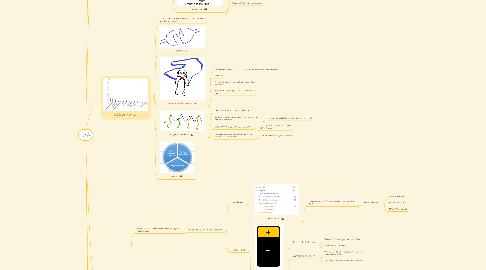
1. Pathophysiology
1.1. Definition
1.1.1. Symptoms less than 24 hours
1.1.1.1. Usually >1 minute but less than 1 hour
1.1.2. Almost always ischaemic in origin
1.1.3. Sudden onset in nature
1.1.4. Can be associated with neuroimaging changes
1.2. Pathology
1.2.1. Locally reduced blood flow to an area of the brain
1.2.1.1. Embolism of great arteries
1.2.1.2. In situ occlusion of small perforating arteries
1.2.2. Causes focal neurological symptoms
2. Investigations
2.1. The gold test is swift assessment by expert in stroke care
2.1.1. Often as symptoms have resolved
2.1.1.1. Risk factors
2.1.1.1.1. ABCD2 score
2.1.1.2. Symptom type
2.1.1.2.1. Symptoms
2.2. Carotid duplex
2.2.1. Advantages
2.2.1.1. Inexpensive
2.2.1.2. No radiation compared to angiogram studies
2.2.2. Not for posterior circulation TIA assessment
2.2.2.1. CT angiogram/MRA used in this case
2.2.3. Looking for extracranial internal carotid stenosis
2.2.3.1. NASCET criteria preferred
2.3. CT head
2.3.1. Rule out haemorrhagic stroke / brain tumour
2.3.2. Should be normal within 6 hours
2.4. MRI head
2.4.1. DWI positive can occur
2.4.2. Dependant on symptoms resolving < 24 hours
2.5. ECG and further cardiac holder monitoring
2.5.1. Underlying Atrial Fibrillation
2.5.2. No p waves present
2.5.3. Irregularly irregular rhythm
3. Management
3.1. Lifestyle - STROKE BOOKLET
3.1.1. Diet
3.1.2. Exercise
3.1.3. Smoking cessation
3.2. Pharmacological Video
3.2.1. Antiplatelets
3.2.1.1. Clopidogrel 75mg
3.2.2. Cholesterol lowering
3.2.2.1. Atorvastatin 80mg ON
3.2.3. Anticoagulation
3.2.3.1. AF
3.2.4. VTE prophylaxis
3.2.4.1. IPCS stockings
3.2.4.2. Preferred as LMWH increases haemorrhagic risk
4. Complications
4.1. Future ischaemic stroke
4.1.1. Capsular warning syndrome
4.1.1.1. Many attacks within 24-48 hours
4.1.1.2. In situ disease of a single perforating artery
4.1.1.3. Unilateral motor/sensory symptoms face, arm, leg
5. Differiential
5.1. 20-50% of TIA presentations in the literature are due to mimics
5.2. Seizure
5.3. Transient global amnesia
5.3.1. Anterograde amnesia
5.3.1.1. Usually several hours then resolved
5.3.2. >50 years
5.3.3. Procedural memory in tact but repetitive questions
5.3.4. Transient hypo perfusion in medial temporal lobe
5.4. Migraine with Aura
5.4.1. Often most common mimic of TIA
5.4.2. Cortica spreading over minutes often lasting less than one hour
5.4.2.1. Often one modality resolves before the next
5.4.3. Visual disturbance most common aura
5.4.3.1. Can be sensory, motor or speech disturbance
5.4.4. Headache is associated either with the event or shortly after
5.4.4.1. No headache - acephalic migraine
5.5. Syncope
6. References & Contributions:
6.1. Fernandes PM, Whiteley WN, Hart SR, et al Strokes: mimics and chameleons Practical Neurology 2013;13:21-28.
6.2. Royal London Ward based patients - many thanks
7. Presentation
7.1. Signs / Symptoms of TIA must mimic the anatomical arterial territory affected
7.1.1. Abruptness of onset often key to diagnosis
7.1.2. Hemiparesis can be both anterior and posterior
7.1.2.1. Not a helpful pointer
7.1.3. OXFORD BANFORD
7.1.3.1. Anterior circulation
7.1.3.1.1. Unilateral weakness (face, arm, Leg)
7.1.3.1.2. Homonymous hemianopia
7.1.3.1.3. Higher cerebral dysfunction
7.1.3.2. Posterior circulation
7.1.3.2.1. Cranial nerve palsy and a contralateral motor/sensory deficit
7.1.3.2.2. Bilateral motor/sensory deficit
7.1.3.2.3. Conjugate eye movement disorder (e.g. horizontal gaze palsy)
7.1.3.2.4. Cerebellar dysfunction (e.g. vertigo, nystagmus, ataxia)
7.1.3.2.5. Isolated homonymous hemianopia
7.1.3.3. Lacunar
7.1.3.3.1. Pure sensory stroke
7.1.3.3.2. Pure motor stroke
7.1.3.3.3. Sensori-motor stroke
7.1.3.3.4. Ataxic hemiparesis
7.2. SPEECH SYMPTOMS
7.2.1. Dysarthria
7.2.1.1. Slurring of speech
7.2.1.2. Many types of dysarthria - Cranial nerve or area of stroke affected
7.2.1.2.1. Planning and/or execution of speech
7.2.1.3. Assessment 'British Constitution' 'Baby Hippopotumus' 'Red lorry, Yellow Lorry'
7.2.2. Aphasia
7.2.2.1. Dystextia - useful tool used
7.2.2.2. Expression
7.2.2.2.1. Infarct of superior division of Left MCA
7.2.2.3. Reception
7.2.2.3.1. Infarct of the inferior division of the Left MCA
7.2.2.4. Conduction
7.2.2.4.1. REPETITION is poor
7.2.2.4.2. Speech production normal
7.2.2.4.3. Comprehension is good
7.2.2.4.4. Sound subsitiutions are common
